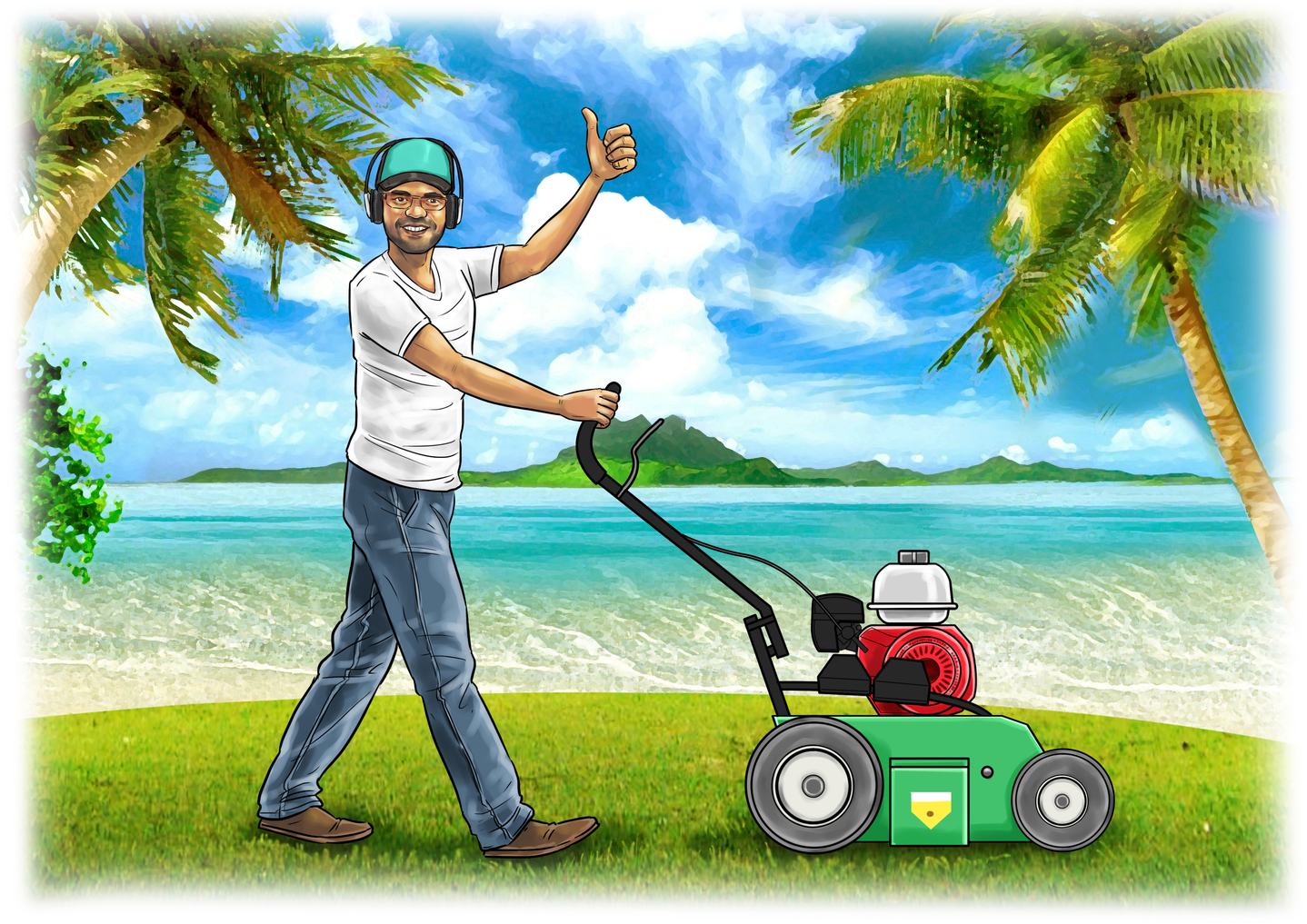
Time to De-thatch that lawn to make it even better all year long!
What is de-thatching? (Also called “thatching” or “verticutting”)
As your lawn grows it get thicker. Part of what is happening is that dead and dying material is falling back into itself all the time. (This is why it;s important to always use a bag on your mowers folks!) This, combined with horizontal growth of the grass creates a layer between the top of the turf and the soil. This layer (the thatch) is what we want to take out.
We use a special tool called a de-thatcher or “verti-cutter”. This tool has blades which cut through all the dead and tangled growth in the lawn turf. Whatever is churned out by the cutting blades appears behind the machine as it moves forward.
Then we rake like crazy!
The last one we did was 8000 sq. ft. of seashore papspalum, which hadn’t been done in over two years. We took away probably about 5 yards of material out of that lawn.
Lastly, we cut the lawn back down with lawn mowers and weedeaters. This leaves just the growing part of the seashore, close to the ground intact. When done “completley” the lawn looks brown for 4-6 weeks. Usually the appearance is fine after about three weeks, but not perfect until about a month.
Why de-thatch?
It’s a hard and messy project, but it pays to do it on time every year for the “low, clean and tight” look.
In addition to beauty and the nice feel of a short cut lawn there are other benefits.
Water usage can sometimes be streamlined. A grass which has a very thick thatch layer requires more water to keep it green. That layer acts as a trap for water.
It’s cleaner looking and feeling.
There are less thick spots for insects to hide.
It’s better for croquet, bocce balls and putting greens!
Fertilizers and weed control products become more efficient, and you can use less of both while maintaining the same effects. Just like the water issue, when you have a nice de-thatched lawn, the fertilizers and weed control products find their way right down to the soil without getting caught up in the thatch.
Finally, all maintenance projects require follow-up. De-thatching is no different! After the main body of work is done, time to get to the details.
The lawn needs to be fertilized soon afterwards.
In our climate here in Kihei-Wailea-Makena, it’s very important to check and double check the irrigation after this work.
If done improperly, or without attention to detail, the verticutting can cause lasting damage to lawns.
I like to visit the properties every few days and take moisture samples from around the yard. We make sure all the areas are well irrigated and everything is working as it should.
We soak in all the dry spots with hoses if we need to. I don’t like any of my lawns to have to suffer these hot and dry afternoons with no moisture in the soil.
If you’d like an estimate of course feel free to contact me!
Thanks for reading!
Noah

